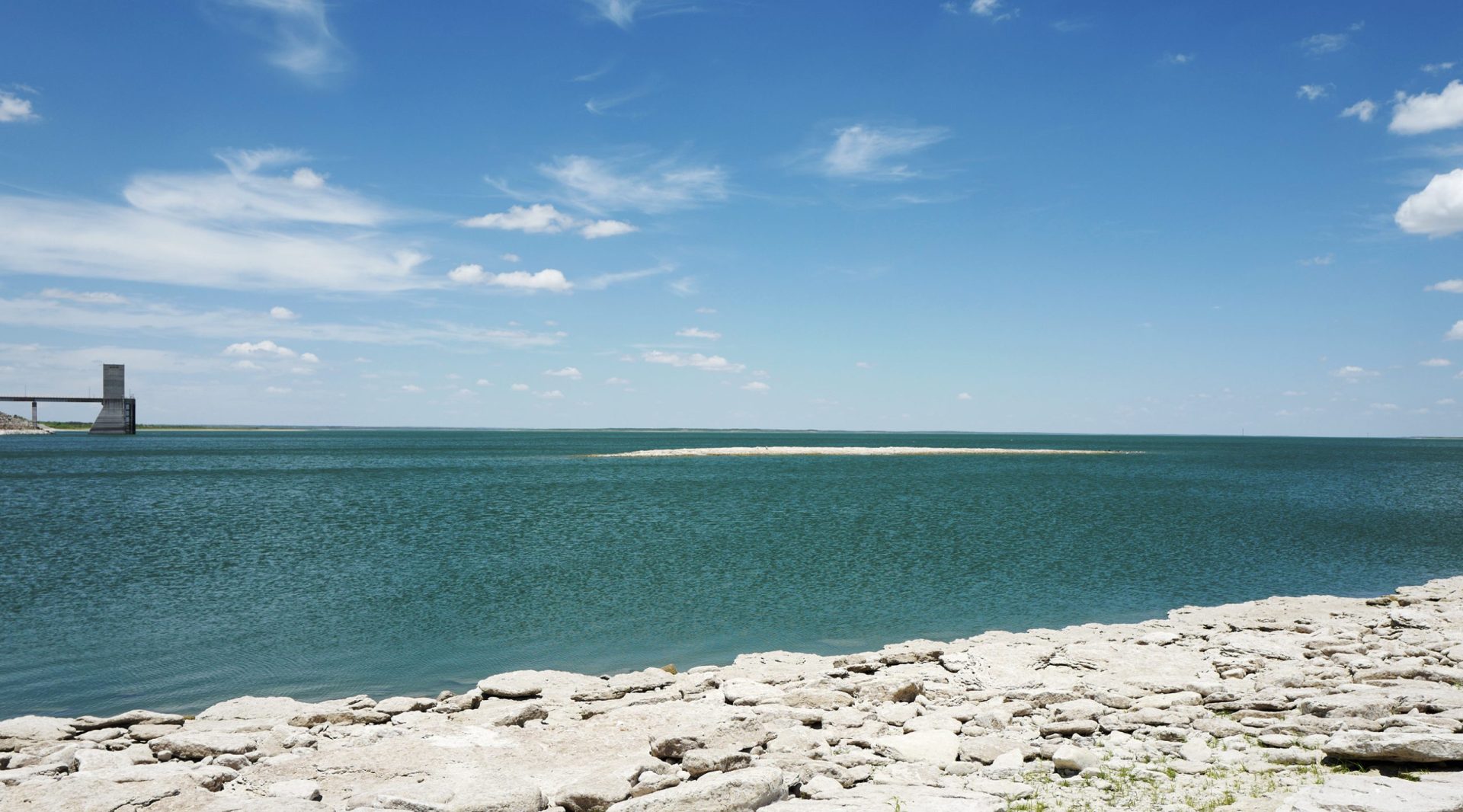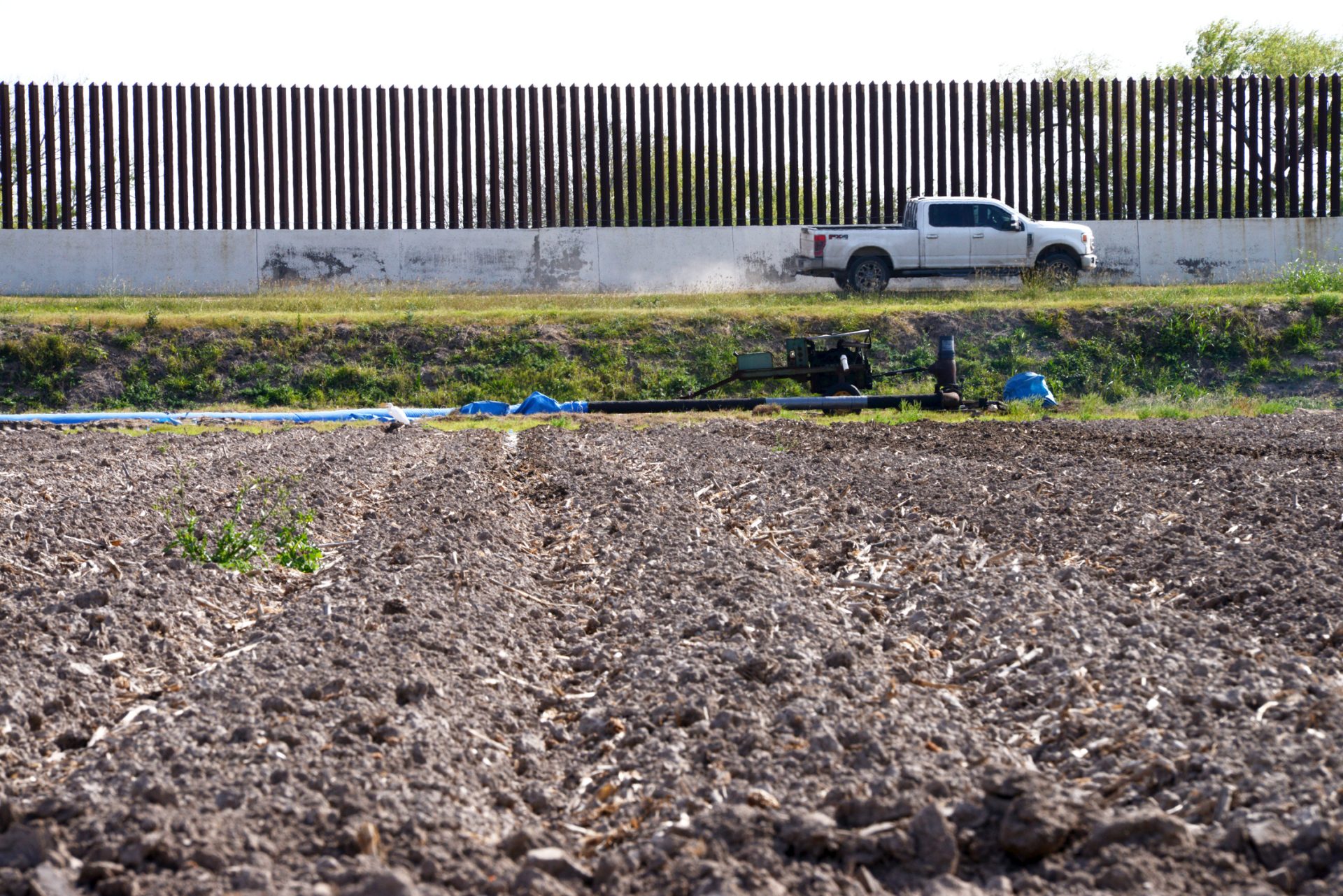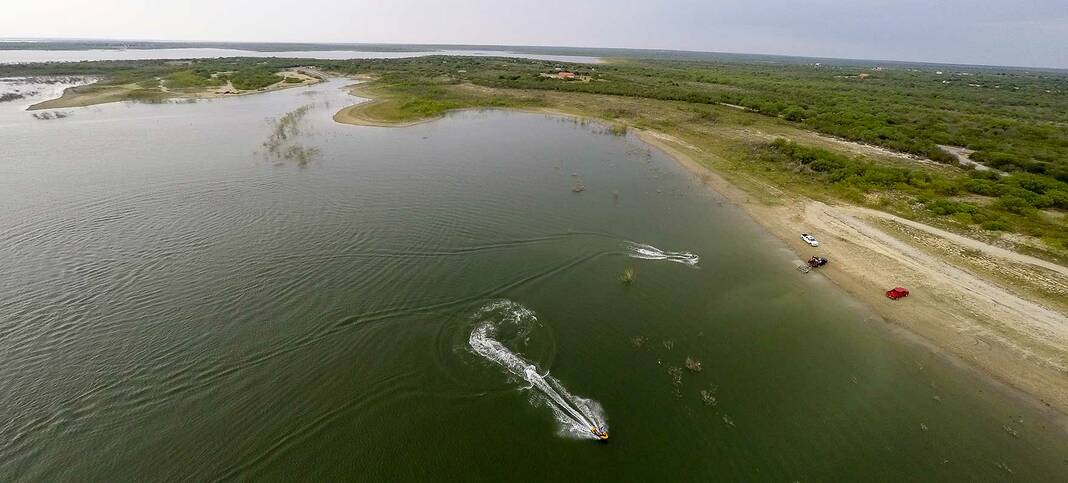|
Only have a minute? Listen instead
Getting your Trinity Audio player ready...
|
A wet and rainy 2023 has done little to assuage concerns over the Rio Grande Valley’s scarce water supply, which is primarily stored at the Falcon and Amistad International Reservoirs that straddle the Rio Grande.
While the rainy spring has been a boon to local farmers, who have begun putting summer crops into the ground, water levels at the two reservoirs remain low and Mexico continues to be far behind schedule in making water deliveries to this side of the border.
That paradoxical reality of scarcity among plenty provides a timely reminder of the distinction between precipitation and water supply, according to Tim Smith, chief meteorologist for the Valley’s ABC affiliate, KRGV.
“I think it’s just important to talk about the difference between drought and water supply. I think that’s a big distinction to make because people are gonna see that we’re getting pounded with rain this weekend, but yet, we’re still at, say, 25% at our reservoirs,” Smith said Friday ahead of a series of overnight storms that sparked a deadly EF1 tornado in Laguna Heights.
The longtime meteorologist estimated that the weekend rain would most likely tip the scales, lifting the Valley out of a drought for the first time in months.
“The drought, for us, is gonna be gone for the first time since October,” Smith said. “The water supply situation will ease; it’s not gonna go away. We’re not gonna fill the lakes, but I think we’ll bring the water up quite a bit,” he said.
At this time last year, Falcon reservoir was 19.3% full, while Amistad was at 40.5%.
But those numbers would go on to drop precipitously as Texas and much of northern Mexico endured a powerful drought.
The levels at Falcon dropped as low as 9.7% in August 2022 — so low that the foundations of the dam’s spill gates were exposed to open air for the first time in decades.
And Mexico — which is obligated by a 1944 binational treaty to deliver 1.75 million acre-feet of water to the United States from six tributaries that feed the Rio Grande — was years behind in making good on those deliveries.

The dire situation had farmers worried over whether their crops would survive because, in Texas, farmers are last on the list of water consumers.
As of Saturday, Falcon sits at 21.2% and Amistad at 35.8%, according to figures from the Texas Water Development Board.
Combined, the two lakes are at just under 30% capacity, explained Sonny Hinojosa, general manager for the Hidalgo County Irrigation District No. 2.
The last few weeks of rain have been fortuitous for Valley farmers because it means they haven’t had to rely on irrigation water, Hinojosa said, describing April, May and June as the months with some of the highest water consumption for the district.
“They normally pre-irrigate in February… which they didn’t have to do this year. And then once they put the seed in the ground, they irrigate again. Once the seed emerges, you irrigate again,” Hinojosa said.
Not having to release water from the reservoirs to irrigate farmland has eased the burden on the water supply, but scarcity concerns “absolutely” remain, he said.

“I mean, yes, we have less than one-third of our capacity. Yes, we are concerned,” Hinojosa said.
Exacerbating those concerns, Mexico continues to lag behind on its water delivery obligations, despite delivering more water over the last nine months than it did over the previous two years, according to figures from the International Boundary and Water Commission, which oversees treaty compliance.
“Mexico is behind by 538,326 acre-feet delivering to the U.S.” Hinojosa said.
“Their target deliveries should be like 880,000 acre-feet and they’ve only delivered 331,000,” he added a moment later.
Like the Valley, Mexico suffered deeply during the prolonged drought last year; however, more precipitation has since fallen there than here.
“The Mexican reservoirs have more water now than they did a year ago,” Smith said.
At the same time the spill gates at Falcon were exposed to the air, Mexican reservoirs like the Venustiano Carranza reservoir in the Rio Salado Basin had dropped as low as 8%, according to figures Smith recorded at the time.
Of the nearly dozen reservoirs that feed into the Rio Grande, none were even as much as halfway full last summer. Many were at 25% capacity or lower.
But as of Saturday, IBWC data paints quite a different picture.
Carranza reservoir is at 50%.
However, Boquilla reservoir, which Mexico most heavily relies upon to deliver the bulk of its water obligations to the United States, currently sits at 72% compared to last August’s 22%.
Other reservoirs, such as Luis L. Leon, Madero and San Gabriel are at more than 90% capacity.
“We sure would appreciate if they would deliver the 350,000 acre-feet a year as the treaty kind of alludes to,” Hinojosa said.
Nonetheless, both the career meteorologist and the lifelong water man agree there’s nothing particularly unusual about the fickle nature of Mother Nature.
Both men spoke of the cyclical pattern of dry years and wet years. And already, long-term forecasts are indicating another shift in the proverbial winds is approaching.
There’s a 93% chance of a La Niña forming this summer, Smith said.
“The long-term forecast right now is that we’re gonna have an equal chance of rain for the rest of this year. And early next year, we get into an El Niño cycle,” Hinojosa said.
“So, things are positive on that note, that we’re getting back to normal rainfall events,” he added.





